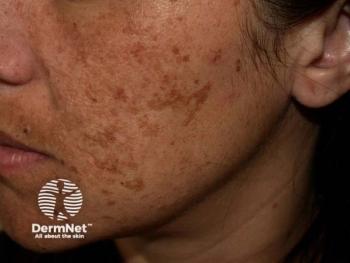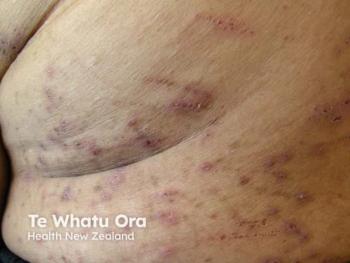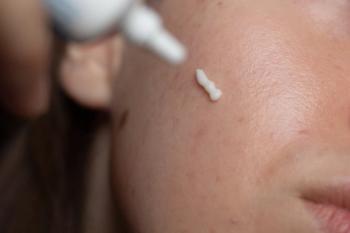
Call for Best Practices in Medication Sampling
Key Takeaways
- Dermatology clinics benefit from sampling due to their reliance on topical therapies, but lack formal guidance and standardized practices.
- Sampling improves patient adherence and satisfaction, reduces costs, and provides immediate treatment access, but raises ethical and safety concerns.
Explore the complexities of medication sampling, balancing patient access with ethical and safety concerns in clinical practice.
Medication samples are a widespread, yet controversial practice in dermatologic care. While offering potential benefits related to patient education, access, and adherence, sampling raises important questions about ethics, safety, and cost. Due to its reliance on topical therapies and clinic-based model, dermatology is especially poised to use samples—but the process currently lacks formal guidance or standardized practices.1
Structural Factors Encouraging Sampling
Clinicians commonly prescribe topical treatments such as creams and ointments, which are particularly well-suited for in-office sampling. Unlike intravenous or inhaled therapies, topicals are easy to store, demonstrate, and distribute. Dermatology clinics, which often interact closely with pharmaceutical representatives, may therefore have both access and infrastructure for maintaining medication sample inventories. In fact, the pharmaceutical industry invests an estimated $13.5 billion annually in drug sampling, much of which supports dermatologic care.2
Review of Available Evidence
A recent literature review identified 55 relevant publications discussing drug samples, with only 7 specifically addressing dermatologic contexts. Most papers explored both advantages and disadvantages of sampling. Commonly cited benefits included improved patient adherence, lower out-of-pocket costs for uninsured patients, and increased patient satisfaction. Disadvantages ranged from skewed prescribing practices to patient safety concerns and health care inequities.3
Clinical Advantages of Sample Use
Sampling can facilitate patient-centered care by allowing patients to try different formulations (e.g., creams vs. foams) before committing to a full prescription. This flexibility can improve comfort, ease of use, and ultimately, adherence. One focus-group study involving adolescents with dermatologic conditions found that most preferred trying a sample before filling a prescription.
Samples also reduce the barrier of pharmacy access. Studies show that patients given medication samples are significantly more likely to initiate treatment, with 1 report noting a 67% increase in adherence. In contrast, researchers found failure to pick up dermatologic prescriptions remains a persistent problem, affecting up to half of psoriasis patients in Denmark. By giving patients immediate access to treatment, dermatologists can potentially prevent complications and reduce disease progression.
The review found that in-office demonstrations with sample medications can improve dosing accuracy, a particularly important benefit given that only 35% of patients apply the correct amount of topical medication. For patients with limited health literacy, these hands-on lessons may be especially valuable.
Importantly, as dermatology continues to adopt newer, branded therapies with no generic equivalents, samples can help bridge financial gaps, particularly for uninsured or underinsured patients. Providing immediate treatment access may also improve outcomes by reducing delays in care initiation.
Clinical Disadvantages and Concerns
Despite these benefits, researchers noted significant concerns persist. Samples are not subjected to the same oversight as filled prescriptions. As a result, expired samples may be given inadvertently, and patient allergies or contraindications may go undetected without pharmacist involvement. Recording sample distribution in electronic medical records could mitigate some of these risks, but such practices are not universally adopted.
Sampling also has the potential to influence prescribing behavior. Studies suggest that physicians who use samples are more likely to prescribe expensive brand-name medications, leading to higher overall health care costs. Furthermore, the review found drug sampling may exacerbate disparities in care; physicians in affluent communities may receive more or higher-quality samples from pharmaceutical representatives, unintentionally limiting access for more vulnerable populations.
Environmental considerations also come into play. The production and distribution of dermatologic medications—especially single-use samples—generate waste and emissions. Without mandated reporting, researchers stated the total environmental impact remains unclear but is likely substantial.
Lack of Regulation and Need for Guidance
Currently, neither the US Food and Drug Administration nor the American Academy of Dermatology has issued formal guidelines on medication sampling. In Europe, regulatory frameworks exist for pharmaceutical companies but not for health care providers, leaving distribution practices largely unregulated. Legal permission for sample use also varies by country.
Recommendations for Best Practices
To address these challenges, the review suggested dermatology organizations and clinics should develop best-practice protocols. Suggested strategies include:
- Documenting all sample distributions in the electronic health record.
- Educating staff on expiration date monitoring and proper storage.
- Establishing clear policies for which medications are acceptable to sample.
- Avoiding use of samples for medications not considered first-line.
By acknowledging both the advantages and limitations of medication samples, clinicians can better balance the clinical needs of their patients with ethical, financial, and environmental considerations. A more standardized and transparent approach to sampling may help ensure that this practice continues to serve patients effectively—without undermining safety or equity.
References
- Heron CE, Purvis CG, Balogh EA, Purvis RS, Feldman SR. Oversight of in-office dispensing and samples in dermatology. Clin Dermatol. 2023;41(2):271-278. doi:10.1016/j.clindermatol.2023.06.012
- Alagha EC, Fugh-Berman A. Pharmaceutical marketing: the example of drug samples. J Pharm Policy Pract. 2022;15(1):78. Published 2022 Nov 7. doi:10.1186/s40545-022-00479-z
- Oscherwitz M, Carmichael A, Martino A, Lovell K and Feldman SR. An economic perspective on sampling in dermatology. JEADV Clinical Practice. 2025. doi:10.1002/jvc2.70047
Newsletter
Like what you’re reading? Subscribe to Dermatology Times for weekly updates on therapies, innovations, and real-world practice tips.


















